#Maria Manuela de Portugal
Text

María Manuela de Portugal (oil on canvas, 16th century)
Portrait of princess Maria Manuela of Portugal, based on a work by Antoine Trouvéon in 1542. Trouvéon was part of the French diplomatic mission that year and was tasked with painting the Portuguese royal family. It was also in 1542 that a delegation from the Kingdom of Kotte (in modern Sri Lanka) arrived in Lisbon, bearing gifts from King Bhuvanekabāhu VII. This was the first delegation from Asia to visit Europe.

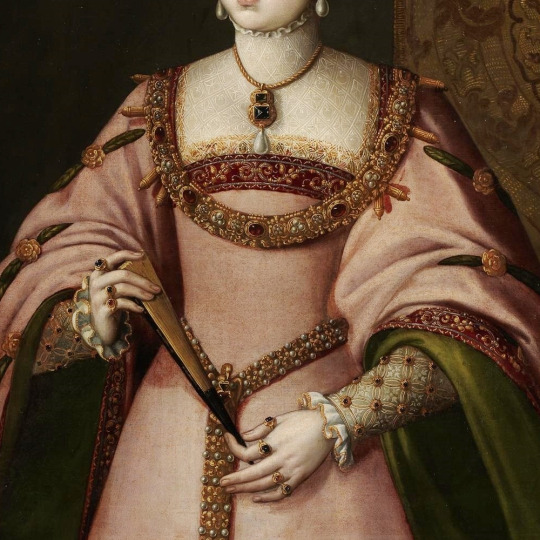
The princess is richly dressed, wears a crown of flowers on her head and is adorned with a wealth of jewels. In her hands she holds a Japanese-style hand fan, which was adopted by the Portuguese court as an element of etiquette and coquetry. Maria Manuela, who used to cover her face with a fan, introduced this custom to Madrid upon her marriage to the future Philip II of Spain. (Source.)
22 notes
·
View notes
Text
youtube
𝓣𝓱𝓮 𝓯𝓸𝓾𝓻 𝔀𝓲𝓿𝓮𝓼 𝓸𝓯 𝓟𝓱𝓲𝓵𝓲𝓹 𝓘𝓘
#the four wives of philip ii#philip ii#philip ii of spain#felipe ii#felipe ii de españa#maría manuela of portugal#mary tudor#elisabeth of valois#anna of austria#mary i of england#maria manuela de portugal#isabel de valois#las cuatro esposas de felipe ii#carlos rey emperador#el ministerio del tiempo#queens: the virgin and the martyr#la conjura del escorial#reinas:virgen y martir#maría tudor#ana de austria#Isabel clara eugenia#catalina micaela#period drama#period drama edit#Youtube
4 notes
·
View notes
Text
Compañeros, hermanos, amigos escuchen y regocíjense.
Europa está en caos, el imperio español se está derrumbando, Portugal continúa perdiendo influencia y Francia pelea en demasiados frentes, es hora de unir nuestras fuerzas, nuestros pueblos pelearán por la libertad, por la justicia ¡Por América!
No sólo derrotaremos a los gachupines, portugueses y franceses en el campo de batalla ¡También nos veremos mejor que ellos mientras lo hacemos!
Esta encuesta determinará quién de todas estas sensuales personas latinoamericanas será la que opacará más a los europeos, a la que más gente le encantaría tener en su cama por una noche ¡El mas grande ejemplo de exquisitez latinoamericana!
¿Quieres nominar a alguien para tan aclamado premio? Puedes hacerlo aquí
Reglas:
1. Puedes nominar a todas las personas que quieras, el formulario no tiene un límite
2. Animamos a que manden propaganda (en inglés o español o portugués)
3. Sexy man/hombre sexy es un término sin género, todos, todas y todes son bienvenidos.
4. Serán juzgados en base de las edades que tenían durante las guerras por la independencia y los admins se esforzarán para encontrar los retratos apropiados.
Eng:
Comrades, brothers, friends listen and rejoice.
Europe is in chaos, the Spanish empire is collapsing, Portugal continues to lose influence, and France is fighting on too many fronts. It is time to join forces, our people fight for liberty and for justice. For America!
We will not only defeat the gachupines, the Portuguese and the French on the battlefield. We will also do it while looking better than them!
This contest will determine who among these sexy Latin Americans outshines the Europeans the most, who most people would invite to their bed for a night. The best example of the exquisiteness of Latin America!
Do you want to nominate someone for such an honor? Nominate them here.
Rules:
You can nominate as many people as you want. The form does not have a limit.
Propaganda is encouraged (in English or Spanish or Portuguese)
Sexyman is a gender neutral term.
They will be judged based on the age they were during the wars for independence and the admins will try their best to find appropriate portraits.
La lista hasta ahora/The existing list is here:
Virreinato de Nueva España
México:
1. Agustin de Iturbide
2. Leona Vicario
3. Juan Aldama
4. José Maria Morelos y Pavón x3
5. Vicente Guerrero x2
6. Antonio Lopez de Santa Anna
Virreinato del Nuevo Reino de Granada:
Colombia:
7. Antonio Nariño x3
8. Antonio Morales Galavís
9. Policarpa Salavarrieta x2
10. Francisco de Paula Santander x 2
Venezula:
13. Simón Bolívar x2
14. José Antonio Paez
Virreinato del Perú:
Perú
11. Manuela Sáenz de Vergara y Aizpuru
12. Micaela Bastidas
Ecuador:
15. Manuela a.k.a Manuelita Saenz x4
Bolivia:
16. Antonio José de Sucre x 2
17. María Ana Carcelén de Guevara y Larrea-Zurbano
Chile:
21. Manuel Javier Rodríguez y Erdoíza
22. José Miguel Carrera Verdugo
Virreinato del Río de la Plata:
Argentina:
18. Manuel Belgrano
19. José de San Martín x 3
20. Martín Miguel de Güemes
Uruguay:
23. Manuel Ceferino Oribe y Viana
24. Juan Antonio Lavalleja
25. José Fructuoso Rivera y Toscan
Haití:
26. Toussaint L’Ouverture
Brasil/The Empire of Brazil:
27. Joaquim Pires de Carvalho e Albuquerque
28. Maria Quitéria de Jesus x2
29. Joaquim Gonçalves Ledo
30. Maria Leopoldina
31. Pedro I
32. Hipólito José da Costa Pereira Furtado de Mendonça
33. José Bonifácio de Andrada e Silva
34.Francisco Gomes da Silva
35. Domitila de Castro Canto e Melo, Marquesa de Santos
36 notes
·
View notes
Text
DIA 14 DE ABRIL DE 2024: “ A SENHORA DE DUBUQUE”, ALBEE PURO E DURO NO TRINDADE ***** E UM BIFE NA SALA MARIA KEIL DA CERVEJARIA TRINDADE NA COMPANHIA DE AMIGOS E DA MINHA FILHA RENATA . DOMINGO QUASE PERFEITO EM TEMPO DE VIUVEZ: ontem assistimos no Trindade a teatro de alto nível com interpretações excelentes. Imperdível .Sim, é Edward Albee puro e duro o de A Senhora de Dubuque, peça estreada em 1980 na Broadway sem grande êxito , mas que, nos últimos anos, tem tido sucesso , no circuito Off Broadway e em Londres . Do autor de “Quem tem medo de Virginia Woolf” estreou por fim em Portugal ,. Devemos a Álvaro Correia este olhar de Edward Albee sobre uma certa burguesia na América dos anos 70 do século passado, onde ressoam os nossos dias. Com Cucha Carvalheiro, Manuela Couto e Fernando Luís nos papéis principais seus parceiros do seu tempo da Comuna .A peça começa com três casais a jogar às 20 perguntas , em casa de Jo e Sam. Apesar da tensão criada pelo jogo, e pelo álcool, o grupo parece estável e divertido. Contudo, isso altera-se e a animosidade surge e as boas maneiras vão-se esfumando. Até que aparece inesperadamente um novo casal, uma mulher elegante, de vestido preto, e um homem sofisticado, e isso expõe ainda mais o potencial destrutivo do grupo.Apenas a anfitriã doente cria uma relação empática com a enigmática mulher. A pergunta inicial coloca-se: será a sua mãe ou um anjo da morte? Este é o ponto fulcral da peça que estreou em 1980 na Broadway uma das peças malditas de Edward Albee. Motivado pela vontade de voltar a trabalhar com Cucha Carvalheiro e Manuela Couto, atrizes com quem partilhou o palco durante vários anos na Comuna, Álvaro Correia descobriu em A Senhora de Dubuque “uma peça que parece ressoar de uma maneira mais forte, hoje, do que na época em que foi escrita”. Albee escreveu-a “ao longo de uma década, desde finais dos anos 60 [do século XX], os anos da presidência de Nixon, passando entretanto pelo Watergate, que pôs em causa a confiança na democracia, e pelo fim da guerra do Vietname.” Álvaro Correia descortina neste “teatro de múltiplas camadas” um retrato da decadência do país mais poderoso do mundo – e “a maior democracia” – a partir da decadência das suas elites intelectuais. O declínio do Tio Sam através de “uma burguesia consumida pelo álcool, invariavelmente destrutiva e que se insulta sem piedade”. Como refere Correia, “esta peça é, a par de A Delicate Balance, aquela que em Albee nos oferece a melhor metáfora sobre o nosso declínio civilizacional.”A melhor maneira de apresentar essa metáfora é através da morte, e A Senhora de Dubuque é uma peça sobre uma mulher a morrer, um marido que a cuida e uma misteriosa personagem que surge, “quem sabe se do inferno”, para encaminhar a alma da mulher moribunda. Em volta, “instala-se o caos, a crueldade, a tensão permanente e a risibilidade.”Álvaro Correia sublinha ainda uma característica desta peça, a forma como as personagens, oito no total, falam para o público, “como se fosse necessária uma nona personagem, o público como cúmplice”.Quando todos se retiram, surgem na casa Elizabeth e o seu companheiro negro, Oscar (Alberto Magassela). Com Jo a repousar no quarto, Sam surpreende-se com aquela inesperada presença e interpela-os sobre o porquê de ali estarem. Elizabeth anuncia ser a mãe de Jo, mas Sam sabe muito bem que a anunciada “senhora de Dubuque” não o é. Ela é um “anjo da morte, inspirada na figura de Hécate, deusa grega a quem se atribuiu ser senhora das encruzilhadas. E está ali para encaminhar Jo para a morte.” Com cenografia e figurinos de Nuno Carinhas e desenho de luz de Manuel Abrantes . Felizes com a experiência fomos depois jantar na cervejaria Trindade na sala Maria Keil .








0 notes
Photo

Um pouquinho de Portugal na casa da Taylor ! 🥹😍😍 •Carlos Lourenço de Habsburgo, Príncipe das Astúrias, era filho de Filipe II de Espanha e da sua primeira esposa, Maria Manuela, filha de João III de Portugal.• Mais no meu blog @taylor_homedecor ! #taylorswift #taylorswiftmidnights https://www.instagram.com/p/Cj_slT3j8I9/?igshid=NGJjMDIxMWI=
1 note
·
View note
Photo

18 e 19 de novembro 2021 | C A R A
Conceção, direção e coreografia Aldara Bizarro
Interpretação Sofia Portugal
Música Vítor Rua
Colaboração Manuela Ribeiro Sanches
Apoio ao Desenho David Bernardino
Apoios CEM - Centro em Movimento, TM Collection
Coprodução Cine -Teatro Municipal João Mota, Teatro Maria Matos, Guimarães 2012 Capital Europeia da Cultura
Produção Jangada
Financiamentos Governo de Portugal/Secretaria de Estado da Cultura/Direção Geral das Artes
Parceria Liga dos Combatentes
Duração aprox. 50 mins
Neste espetáculo-aula concebido para crianças e jovens, mas da maior relevância para todos os públicos, uma bailarina de skate começa por confessar ao público “não saber nada” de história. Mas logo depois, aos nossos olhos, um pequeno país se vai formando e de seguida viajando por um mapa mundi cuidadosamente desenhado e corrigido pela jovem ao longo de mais de 1200 anos. Nesta longa viagem de ir sendo, que se estende até aos dias de hoje, assistimos de modo crítico à constituição da(s) identidade(s) portuguesa(s), em diálogo com a realidade política, cultural e económica mundiais. Através de um dispositivo simples e eficaz - uma bailarina conversando e desenhando um mapa, provocadoramente centrado num Portugal fora de escala e cheio de si -, temos ao nosso dispor um conjunto vasto e relevante de informações para discutir com os jovens, cara a cara: “- Quem somos, hoje e aqui, neste país pequeno que faz por caber numa Europa cansada?; De que forma nos foi contada a nossa história? Como gostaríamos de continuar a escrevê-la?; Como podemos ser melhores portugueses?”
0 notes
Photo

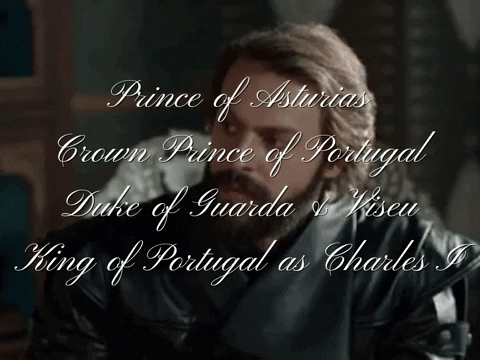
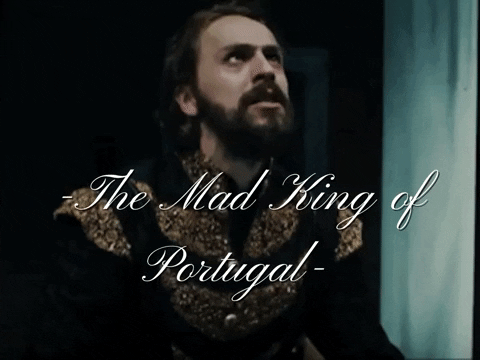
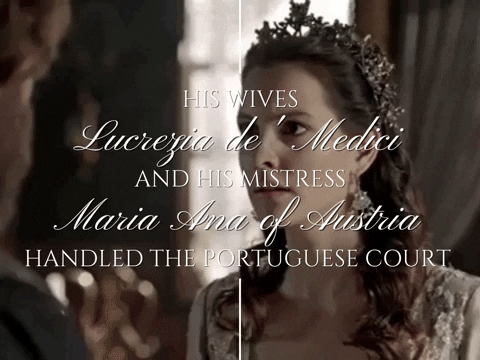

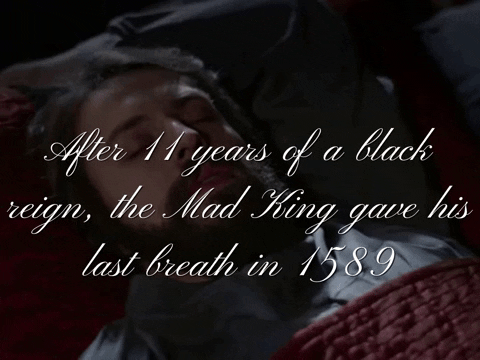
𝙻𝙾𝚂 𝙷𝙸𝙹𝙾𝚂 𝙳𝙴 𝙵𝙴𝙻𝙸𝙿𝙴 𝙸𝙸 𝙳𝙴 𝙴𝚂𝙿𝙰Ñ𝙰-𝙲𝙰𝚁𝙻𝙾𝚂 𝙸 𝙳𝙴 𝙿𝙾𝚁𝚃𝚄𝙶𝙰𝙻
Carlos de Austria y Avis fue el único hijo de Felipe de Austria futuro Felipe II de España con su primera esposa María Manuela de Portugal que era princesa de Portugal.
Su madre falleció tras darlo a luz y fue criado por sus tías las infantas María y Juana, pero esta ultima llegaría a ser su favorita y quien mas lo cuido tras marcharse María a Viena para casarse con el archiduque Maximiliano.
Tras su tía Juana marcharse a Portugal para casarse con el príncipe Juan Manuel, Carlos se quedaría con algunos familiares cercanos y no vio a su padre por largos periodos de tiempo.
Carlos empezó a desarrollar sus primeros juegos sádicos lastimando a animales pequeños y causando numerosas travesuras peligrosas.
Carlos fue educado en la Universidad de Alcalá de Henares junto al medio hermano del rey don Juan de Austria y su primo hermano Alejandro Farnesio. Sin embargo no fue un buen estudiante y llego a ser una gran vergüenza para su padre.
En un principió el príncipe estaba comprometido con la princesa francesa Isabel de Valois, pero esta acabaría casándose con su padre tras este divorciarse en 1558 de la reina María I de Inglaterra.
Tras su fallido compromiso se le busco una nueva prometida y varios nobles ofrecieron a sus hijas, entre ellos el Duque de Florencia Cosme de Medici que ofreció 3 retratos de sus 4 hijas: Lucrecia, Ana y Juana. Carlos se decanto por Lucrecia debido a que le parecía una joven guapa, sumisa y con un aspecto delicado.
La boda entre Carlos y Lucrecia se celebro a principios del 1560 teniendo los prometidos 14 años en el momento de la unión, además de ser nombrados príncipes de Asturias. El matrimonio fue consumado pese a que Lucrecia aun no menstruaba y Carlos llego a decir que le encantaba como su esposa chillaba, gemía y gritaba cuando la penetraba resultándole muy satisfactorio.
Lucrecia no se quedaría embarazada hasta 1561 pese a que los príncipes compartían el lecho hasta 4 veces por noche.
Pese a la débil salud de Carlos el y su esposa tuvieron 8 hijos en común:
Carlos II de Portugal (1561-1631) Fue rey de Portugal y segundo rey de la Dinastía Austria. Carlos es conocido como “El testarudo” por su lucha inalcanzable por tener el trono español, pero nunca lo conseguiría.
Se caso en dos ocasiones, en primeras nupcias se caso con la archiduquesa María Ana de Habsburgo y tuvieron 3 hijas: Ana, María y Carolina. Al enviudar en 1591 se caso con Ana de Suecia y tuvieron 5 hijos: Carlos III, Enrique, Juan, Fernanda y Renata.
Sebastián de Viseu (1563-1640) Fue Duque de Viseu como segundo hijo y fue conocido como “La serpiente portuguesa” por sus numerosas intrigas palaciegas y pasando entre los bandos de su hermano Carlos II y su tío Enrique V de España.
Se caso con su prima Romola de Medici y tuvieron 3 hijos: Renato, Claudia y Manuela. Tras divorciarse en 1599 se caso con su amante Maria de Mendoza y Maria de Silva con la cual ya tenia 6 hijos ilegítimos entre ellos Juan de Viseu.
María de Portugal (1564-1608) Fue Reina consorte de Polonia al ser la segunda esposa de su primo Segismundo III Jagellon y tuvieron 5 hijos: Alejandro, María Casimira, Carlota, Ana Joaquina y Fernando.
Murió debido a la tuberculosis.
Manuela de Portugal (1566-1639) Fue duquesa de Ferrara, Modena y Reggio al casarse con Alfonso III de Este, único hijo de Alfonso II. Manuela le dio a su marido 8 hijos: Manuela Catalina, María Enriqueta, Alfonso IV, niño mortinato, Cecilia, Lucrecia, Federico y Antonio.
Lucrecia de Portugal (1569-1610) Fue Duquesa de Urbino al ser la primera esposa de Francesco Maria II della Rovere y tuvieron 2 hijos: Francisco Maria III y Enrique Fernando.
Lucrecia falleció a los 41 años por la viruela.
Lorenzo de Guarda (1570-1599) Fue Duque de Guarda por herencia y desempeño una carrera militar. Se caso con Anna Juliana Gonzaga y tuvieron dos hijas: Juliana María y María Teodora.
Fue asesinado a los 29 años por unos ladrones mientras regresaba de una noche en taberna.
Juan de Portugal (1572-1575) Fue el ultimo hijo de los reyes y gemelo de Romola. Fue un niño muy delicado y acabo falleciendo a los 3 años de edad.
Romola de Portugal (1572-1582) Fue la gemela de Juan. Su padre decidió que debía convertirse en monja, pero durante su etapa como novicia Romola enfermo de viruela y falleció a los 10 años de edad.
Durante los embarazos de su esposa, Carlos mantuvo varias relaciones extramatrimoniales con sirvientas y prostitutas, teniendo probablemente algunos hijos ilegítimos, pero solo reconoció a dos de estos:
Margarita (1565-1640) Fue condesa consorte de Belchite al casarse con Juan Francisco Cristóbal Fernández de Híjar y Fernández de Heredia con el cual tuvo 8 hijos.
Carlos Enrique (1571-1612) Fue un destacado militar y Duque de Guimarães siendo llamado “el duque bastardo”. Se caso con María de Braganza, hija del Duque Juan I de Braganza y con ella tuvo 5 hijos.
Tras su muerte su hijo, Jaime le fue arrebatado el Ducado de Guimarães y le fue entregado el titulo de Conde de Vizela.
Carlos tuvo infinidad de relaciones extramatrimoniales aun que siempre se supo que sentía una gran debilidad por su esposa y conforme sus problema mentales iban aumentando mas se volvía un esposo fiel.
El príncipe llego a ser muy impopular por su amor por la tortura y las artes amatorias. Una de sus mayores leyendas negras fue la que cuenta que mantuvo un romance con su tía favorita Juana de Austria cuando esta regreso a España tras enviudar del príncipe Juan Manuel de Portugal. Sin embargo esta leyenda termino cuando Felipe II de España caso a su hermana en 1559 con Constantino de Braganza y tuvo 3 hijos con el.
En 1576 Sebastián I de Portugal nombro a Carlos como su heredero en el trono portugués debido a que el rey se negaba a casarse. El príncipe se mostro ansioso por portar la corona portuguesa al ser hijo de María Manuela de Portugal, pero Felipe II aprovecho esta oportunidad para forzar a su hijo a dejar su titulo como Príncipe de Asturias y heredero al trono español a cambio de ser rey de Portugal.
Carlos acepto de mala gana renunciar a la corona de España debido a que quería ser rey y sabía que tenia mas posibilidades de fallecer antes que su padre.
El 13 de noviembre del 1576 fue nombrado príncipe heredero de Portugal junto a su esposa. Sin embargo el pueblo no lo quería a un extranjero como su futuro rey, empezando a ser llamado en un principio “El indeseado”.
Tras casi dos años de ser príncipe heredero de Portugal, el rey Sebastián I de Portugal falleció supuestamente en 1578 durante la batalla de Alcazarquivir.
Carlos fue coronado como Carlos I de Portugal en Lisboa junto a su esposa que seria su Reina consorte.
Una de las primeras decisiones que tomo fue el de desterrar a su tío abuelo Enrique de Portugal que deseaba quedarse con el trono portugués e incluso se dice que pudo mandar a envenenarlo para quitárselo de en medio, pero el cardenal acabaría falleciendo un año después por causas naturales.
Su reinado fue conocido como “El gobierno del Loco” debido a la gran cantidad de damas bellas que se encontraban en la corte, además de que se implemento los castigos de tortura por cualquier crimen hacia la corona. Carlos fue conocido El rey loco de Portugal ya que mientras avanzaba el tiempo mas era su inestabilidad mental, siendo muy frecuente que llegase a golpear a sus criados y a sus amantes e incluso se cree que asesino cruelmente a una de estas mientras intimaban al ahorcarla con una sabana.
En 1584 llego a la corte portuguesa su prima María Ana de Austria y Mendoza que era la hija ilegitima de su tío Don Juan de Austria. Carlos se obsesiono con su prima y la saco del convento donde había crecido para convertirla en su amante.
Aquella relación fue un absoluto escandalo debido a que ambos eran primos paternos, además de ser María Ana una hija ilegitima de un hijo legitimado. Pero al rey poco le importo y le entrego a su joven amante el viejo Señorío de Cadaval, además de darle algunos regalos.
María Ana y Lucrecia de Medici entablaron una buena relación e incluso se dice que entre los reyes y la amante del rey mantuvieron un trío o incluso se llego a pensar que María Ana complacía tanto al rey como a la reina en sus aposentos.
Pese a estos rumores la reina y la amante oficial manejaron al rey siendo ellas las que mandaban en la corte lusa, además de atender los asuntos de estado mientras que Carlos I se entregaba a los placeres de la vida.
La amante oficial alumbro a una hija del rey:
María Ana de Portugal (1588-1648) Fue condesa de Tentúgal y marquesa consorte de Ferreira al casarse con Francisco de Melo con el cual tuvo 12 hijos.
Tras el nacimiento de su ultima hija ilegitima, Carlos se distancio de María Ana y esta acabaría casándose con Miguel Luís que era conde de Alcoutim y sexto marques de Vila Real con el cual tuvo 7 hijos.
Carlos llevaba varios años padeciendo de gota y de continuos dolores de cabeza siempre poniéndose de mal humor, además de tener insoportables dolores. Su condición siguió empeorando permaneciendo por varios días en cama y siendo cuidado por su esposa que nunca se aparto de el.
El rey dicto su testamento en sus pocos momentos de cordura repartiendo sus dominios entre sus hijos y dejándole a su mujer una gran suma de dinero como agradecimiento por haber estado siempre con el.
Carlos I de Portugal falleció a los 44 años de edad supuestamente por sus continuos ataques de gota o por que el mismo bebió una copa de vino que contenía arsénico muriendo en cuestión de segundos.
Fue sucedido por su hijo Carlos II y la Dinastía Austria seguiría reinando por 8 generaciones mas hasta el reinado de Carlota I de Portugal que seria su descendiente.
𝚃𝙷𝙴 𝙲𝙷𝙸𝙻𝙳𝚁𝙴𝙽 𝙾𝙵 𝙿𝙷𝙸𝙻𝙸𝙿 𝙸𝙸 𝙾𝙵 𝚂𝙿𝙰𝙸𝙽-𝙲𝙷𝙰𝚁𝙻𝙴𝚂 𝙸 𝙾𝙵 𝙿𝙾𝚁𝚃𝚄𝙶𝙰𝙻
Charles of Austria and Avis was the only son of Felipe of Austria future Philip II of Spain with his first wife María Manuela of Portugal who was princess of Portugal.
His mother died after giving birth to him and he was raised by his aunts the infantas María and Juana, but the latter would become his favorite and the one who cared for him the most after Maria left for Vienna to marry Archduke Maximilian.
After his aunt Juana left for Portugal to marry Prince Juan Manuel, Carlos would stay with some close relatives and did not see his father for long periods of time.
Carlos began to play his first sadistic games by hurting small animals and causing numerous dangerous mischiefs.
Charles was educated at the University of Alcalá de Henares together with the half brother of King Juan of Austria and his first cousin Alexander Farnese. However, he was not a good student and he became a great shame to his father.
In the beginning, the prince was engaged to the French princess Elisabeth of Valois, but she would end up marrying her father after he divorced Queen Mary I of England in 1558.
After his failed engagement, a new fiancee was sought for him and several nobles offered his daughters, among them the Duke of Florence Cosimo de' Medici who offered 3 portraits of his 4 daughters: Lucrezia, Anna and Juana. Charles opted for Lucrezia because he thought she was a pretty, submissive young woman with a delicate appearance.
The wedding between Charles and Lucrezia was celebrated at the beginning of 1560 having the promised 14 years at the time of the union, in addition to being named princes of Asturias. The marriage was consummated despite the fact that Lucrezia still did not menstruate and Charles went on to say that she loved how her wife screamed, moaned and screamed when she penetrated her, finding it very satisfactory.
Lucrezia would not get pregnant until 1561 despite the princes sharing the bed up to 4 times a night.
Despite Charles's weak health, he and his wife had 8 children in common:
Charles II of Portugal (1561-1631) He was king of Portugal and second king of the Austrian Dynasty. Carlos is known as "El stubborn" for his unattainable struggle to have the Spanish throne, but he would never achieve it.
He married twice, in the first nuptials he married Archduchess María Ana de Habsburgo and they had 3 daughters: Ana, María and Caroline. When he was widowed in 1591 he married Ana of Sweden and they had 5 children: Charles III, Henry, John, Fernanda and Renee.
Sebastián of Viseu (1563-1640) He was Duke of Viseu as second son and was known as "The Portuguese Serpent" for his numerous palace intrigues and passing between the sides of his brother Charles II and his uncle Henry V of Spain .
He married his cousin Romola de Medici and they had 3 children: Renato, Claude and Manuela. After divorcing in 1599, he married his mistress Maria de Mendoza and Maria de Silva, with whom he already had 6 illegitimate children, including John of Viseu.
María of Portugal (1564-1608) was Queen consort of Poland as the second wife of her cousin Sigismund III Jagellon and they had 5 children: Alexander, María Casimira, Charlotte, Anna Joaquina and Ferdinand.
She died due to tuberculosis.
Manuela of Portugal (1566-1639) She was Duchess of Ferrara, Modena and Reggio when she married Alfonso III of Este, the only son of Alfonso II. Manuela gave her husband 8 children: Manuela Catalina, María Enriqueta, Alfonso IV, stillborn child, Cecilia, Lucrezia, Frederick and Antonio.
Lucrezia of Portugal (1569-1610) She was Duchess of Urbino as she was the first wife of Francesco Maria II della Rovere and they had 2 children: Francisco Maria III and Enrique Fernando.
Lucrecia died at the age of 41 from smallpox.
Lorenzo of Guarda (1570-1599) He was Duke of Guarda by inheritance and a military career. He married Anna Juliana Gonzaga and they had two daughters: Juliana María and María Teodora.
He was murdered at the age of 29 by robbers while returning from a night in a tavern.
John of Portugal (1572-1575) He was the last son of the kings and twin of Romola. He was a very delicate child and he ended up passing away at 3 years of age.
Romola of Portugal (1572-1582) was the twin of John. Her father decided that she should become a nun, but during her stage as a novice Romola was ill with smallpox and passed away at the age of 10.
During the pregnancies of his wife, Charles had several extramarital affairs with maids and prostitutes, probably having some illegitimate children, but he only recognized two of these:
Margaret (1565-1640) she was Countess consort of Belchite when she married Juan Francis Christóbal Fernández de Híjar and Fernández de Heredia with whom she had 8 children.
Charles Henry (1571-1612) He was a prominent military man and Duke of Guimarães being called “the bastard duke”. He married María of Braganza, daughter of Duke Juan I de Braganza and with her he had 5 children.
After his son's death, Jaime was taken from him by the Duchy of Guimarães and he was given the title of Count of Vizela.
Charles had countless extramarital affairs even though it was always known that he felt a great weakness for his wife and as his mental problems increased, he became a faithful husband.
The prince became very unpopular because of his love of torture and the lovemaking arts. One of his greatest black legends was that he had an affair with her favorite aunt Juana de Austria when she returned to Spain after being widowed by Prince Juan Manuel of Portugal. However, this legend ended when Felipe II of Spain married his sister in 1559 with Constantine of Braganza and had 3 children with him.
In 1576 Sebastián I of Portugal named Charles as his heir to the Portuguese throne because the king refused to marry. The prince was eager to wear the Portuguese crown as he was the son of María Manuela of Portugal, but Felipe II took this opportunity to force his son to give up his title as Prince of Asturias and heir to the Spanish throne in exchange for being King of Portugal. .
Charles reluctantly agreed to give up the crown of Spain because he wanted to be king and knew that he had a better chance of dying before his father.
On November 13, 1576, he was named Crown Prince of Portugal along with his wife. However, the people did not want a foreigner like his future king, beginning to be called "The unwanted one" at first.
After almost two years of being Crown Prince of Portugal, King Sebastián I of Portugal supposedly died in 1578 during the Battle of Alcazarquivir.
Charles was crowned Charles I of Portugal in Lisbon with his wife who would be his Queen consort.
One of the first decisions he made was to banish his great-uncle Enrique from Portugal, who wanted to stay with the Portuguese throne and it is even said that he could have him poisoned to get him out of the way, but the cardinal would end up dying a year later due to causes. natural.
His reign was known as "The government of the Fool" due to the large number of beautiful ladies who were at court, in addition to the punishment of torture for any crime against the crown. Charles was known The Mad King of Portugal since as time progressed, his mental instability was more, being very frequent that he hit his servants and his lovers and it is even believed that he cruelly murdered one of these while they intimidated by hanging her with a sheet.
In 1584 his cousin María Ana de Austria y Mendoza, who was the illegitimate daughter of his uncle Don Juan de Austria, arrived at the Portuguese court. Charles became obsessed with her cousin and took her out of the convent where he had grown up to make her her lover.
That relationship was an absolute scandal because both were paternal cousins, in addition to being María Ana an illegitimate daughter of a legitimate son. But the king cared little for me and he gave his young mistress the old Señorío de Cadaval, in addition to giving her some gifts.
Maria Ana and Lucrezia de Medici established a good relationship and it is even said that between the kings and the king's mistress they had a trio or it was even thought that Maria Ana pleased both the king and the queen in her chambers.
Despite these rumors, the queen and the official mistress managed the king, they being the ones who ruled the Portuguese court, in addition to attending to state affairs while Charles I indulged in the pleasures of life.
The official mistress gave birth to a daughter of the king:
María Ana de Portugal (1588-1648) she was Countess of Tentúgal and Marchioness consort of Ferreira when she married Francisco de Melo with whom she had 12 children.
After the birth of her last illegitimate daughter, Charles distanced himself from María Ana and she would end up marrying Miguel Luís who was count of Alcoutim and sixth marquess of Vila Real with whom she had 7 children.
Charles had been suffering from gout and continuous headaches for several years, always getting in a bad mood, in addition to having excruciating pain. His condition continued to worsen by staying for several days in bed and being cared for by his wife who never left his.
The king dictated his will in the few moments of sanity, dividing his dominions among his children and leaving his wife a large sum of money as thanks for having always been with his.
Charles I of Portugal died at the age of 44, supposedly due to his continuous attacks of gout or because he himself drank a glass of wine that contained arsenic, dying in a matter of seconds.
He was succeeded by his son Charles II and the Austrian Dynasty would continue to reign for 8 more generations until the reign of Charlotte I of Portugal who would be his descendant.
#carlos de austria#charles of austria#philip ii of spain#Maria Manuela de Portugal#maria manuela of portugal
9 notes
·
View notes
Text
Philip II, King of Spain
Philip II, King of Spain

Philip II in armour in 1551, shortly before he married Queen Mary I of England. Painting by Titian
Philip was born on May 21, 1527 in Valladolid in northern Castile. He was the son of Charles V, King of Spain and Holy Roman Emperor and Isabella, sister of the King of Portugal. He was brought up by his mother until her death in 1539 and rarely saw his father who tended to business overseas. …
View On WordPress
#Alessandro Farnese#Anna of Austria#Battle of Lepanto#Battle of St. Quentin#Castile#Catherine de’Medici#Charles V#Don Carlos#early modern history#Edward VI#Elisabeth de Valois#Elizabeth I#Henri II#Holy Roman Emperor#King of England#King of France#King of Portugal#King of Spain#Low Countries#Maria Manuela#Mary I#Mary Queen of Scots#medieval history#Philip II#Philip III#Portuguese History#Queen of England#Queen of France#Queen of Spain#Regent of the Netherlands
1 note
·
View note
Text
PRIMERA IBERDROLA – ESPANHA
ATHLETIC CLUB
Chegadas (IN):
· Ainize Barea (Deportivo Abanca)
· Itxaso Uriarte (Real Sociedade)
· Leyre Monente (primeiro contrato profissional)
· Mariasun Quiñones (Real Sociedade)
Saídas (OUT):
· Amaia Peña (empréstimo SD Eibar)
· Andere Leguina (aposentou)
· Andrea Sierra
· Jone Íbañez
· Leia Zarate (aposentou)
· María Díaz Cirauqui
· Marta Perea (aposentou)
· Nerea Nevado (empréstivo Deportivo Alavés)
Extensão contratual:
· Erika Vázquez
———————————————————————————
Atlético de Madrid
Chegadas (IN):
- Amanda Frisbie (Madrid CFF)
- Bárbara Latorre (Real Sociedade)
· Estefanía Banini (Levante)
· Maitane López (Real Sociedade)
· Sheila García (Rayo Vallecano)
· Thembi Kgatlana (Eibar)
Saídas (OUT):
· Alejandra Bernabé (empréstimo - SD Eibar)
· Aminata Diallo (fim de empréstimo - PSG)
· Charlyn Corral (Pachuca)
· Emelyne Laurent (fim de empréstimo - Lyon)
· Graze Kazadi (fim de empréstimo - Lyon)
· Kylie Strom (Orlando Pride)
· Pauline Peyraud-Magnin (Juventus)
· Sánchez Vera
· Sonia Majarin (empréstimo – Deportivo Alavés)
· Toni Duggan (Everton)
· Turid Knaak (Wolfsburg)
Extensão contratual:
· Sonia Majarin
· Virginia Torrecilla
———————————————————————
DEPORTIVO ALAVÉS
Chegadas (IN):
· Abdulai Mukarama
· Carla Armengol (Barcelona)
· Garazi Facila (Osasuna)
· Nerea Nevado Gómez (empréstimo – Athletic Club)
· Ohale Osinachi (Madrid CFF)
· Sara Carrillo Moreno (Osasuna)
Saídas (OUT):
· Érika Samya
· Maialen Martínez (aposentou)
· Minori Chiba
· Silvia Mérida
· Silvia Ruiz
· Uxue Mendia
Extensão contratual:
· Ane Miren
· Emma Martín Queralt
· Gemma Soliveres
· Marta Sanadri
· Mery Ortiz
· Neike Barga
· Vera Martínez
————————————————————————
FC BARCELONA
Chegadas (IN):
· Fridolina Rolfo (Wolfsburg)
· Ingrid Engen (Wolfsburg)
· Irene Paredes (PSG)
Saídas (OUT):
· Carla Armengol (fim de emprésitimo Sevilla – não renovou e foi para o Deportivo Alavés)
· Kheira Hamraoui (PSG)
· Vicky Losada (Manchester City)
Extensão contratual:
· Ana-Maria Crnogorcevic
· Andre Falcón
· Melanie Serrano
———————————————————————-
LEVANTE UD
Chegadas (IN):
· Fiamma Benítez (primeiro contrato profissional)
· Leire Baños (Real Sociedade)
· Nuria Mendoza (Real Sociedade)
· Tatiana Pinto (Sporting Club de Portugal)
Saídas (OUT):
· Claudia Zornoza (Real Madrid)
· Estefanía Banini (Atlético de Madrid)
· Esther González (Real Madrid)
· Rocío Gálvez (Real Madrid)
Extensão contratual:
· Natasa Andonova
——————————————————-
MADRID CFF
Saídas (OUT):
· Amanda Frisbie (Atlético de Madrid)
· Joyce Borini
· María Sampalo (Deportivo)
· Priscila Borja (aposentou)
· Sara Tui
· Sheyla Andrino (Oviedo)
· Valeria Cantuario (Benfica)
——————————————————-
REAL BETIS
Chegadas (IN):
· Grace Asantewaa (EDF Logroño)
· Laura Gutiérrez (Real Oviedo)
Saídas (OUT):
· Ana Hernández
· Bea Parra (aposentou)
· Emily Dolan
· Laura González
· Marta Perarnau
· Méline Gérard
· Michaela Abam
· Oriana Altuve (Valencia)
· Rosa Otermín
Extensão contratual:
· María Valle
————————————————————
RAYO VALLECANO
Saídas (OUT):
· Ana María Catalá
· Elena Martínez
· Natalia Expósito
· Ruth Bravo
· Sheila García (Atlético de Madrid)
· Teresa Morató (Villareal)
· Yasmin Mrabet
· Zaira Flores (Villareal)
————————————————————-
REAL MADRID
Chegadas (IN):
· Claudia Zornoza (Levante)
· Esther González (Levante)
· Lucía Rodríguez (Real Sociedade)
· Méline Gérard (Real Betis)
· Nahikari García (Real Sociedade)
· Rocío Gálvez (Levante)
Saídas (OUT):
· Chioma Ubogagu
· Jessica Martínez (Sevilla)
· Samara Ortiz (Brondby)
· Sofia Jakobsson (Bayern de Munique)
· Thaisa Moreno
· Yohana Gómez
Extensão contratual:
· Kosovare Asllani
· Malena Ortiz
· Babett Peter
· Lorena Navarro
· Aurélie Kaci
———————————————————————
REAL SOCIEDAD
Chegadas (IN):
· Clare Pleuler (Granadilla)
· Iris Arnaiz (Deportivo)
· Manuela Vanegas (RCD Espanyol)
Saídas (OUT):
· Bárbara Latorre (Atlético de Madrid)
· Itxaso Uriarte (Athletic Club)
· Kiana Palacios
· Leire Baños (Levante)
· Lucía Rodríguez (Real Madrid)
· Maitane López (Atlético de Madrid)
· Manuela Lareo
· Mariasun Quiñones (Athletic Club)
· Nahikari García (Real Madrid)
· Nuria Mendoza (Levante)
—————————————————————————-
SD EIBAR
Chegadas (IN):
· Amaia Peña (empréstimo – Athletic Club)
Saídas (OUT):
· Jimena López (OL Reign)
· Juliana Cardozo
· Mar Torràs
· Nerea Abacens
· Thembi Kgatlana (Atlético de Madrid)
———————————————————————-
SEVILLA FC
Chegadas (IN):
· Débora García Mateo (RCD Espanyol)
· Jéssica Martínez (Real Madrid)
· Rosa Otermín (Real Betis)
Saídas (OUT):
· Aivi Luik
· Carla Armengol (fim de empréstimo - Barcelona)
· Claudia Pina (fim de empréstimo – Barcelona)
· Maite Albarrán
· María Bores
· Raquel Pinel (Villareal)
· Sara Serrat
· Sejde Abrahamsson
· Virgy García (aposentou)
Extensão contratual:
· Isabella Echeverri
· Javiera Toro
· Lucía Ramirez
· Nagore Calderón
· Natalia Gaitán
· Toni Payne
———————————————————
SPORTING DE HUELVA
Chegadas (IN):
· Emily Dolan (Real Betis)
· Judith Luzuriaga (EDF Logroño)
· Leticia Méndez (C.D. Escuelas de Fútbol de Logroño)
· Paula Romero (primeiro contrato profissional)
Saídas (OUT):
· Anna Buhigas
· Claire Falknor (UDG Tenerife)
· Jenni Morilla
· Mikela Waldman
· Pamela Begic
- Sandra Bernal (Tacuense)
- Sofía García
- Yoko Tanaka
#primera iberdrola#woso#alexia putellas#barcelona femeni#atletico de madrid femenino#athletic club#mapi león#ingrid engen#irene paredes#ifyounoticeamistakeornewsigningstextmepls#fridolina rolfo#this was so much work so please reblog and tag me if used#Portuguese#women soccer#nwsl
9 notes
·
View notes
Text
DOMITILA OF CASTRO
Marchioness of Santos
(born 1797 - died 1867)
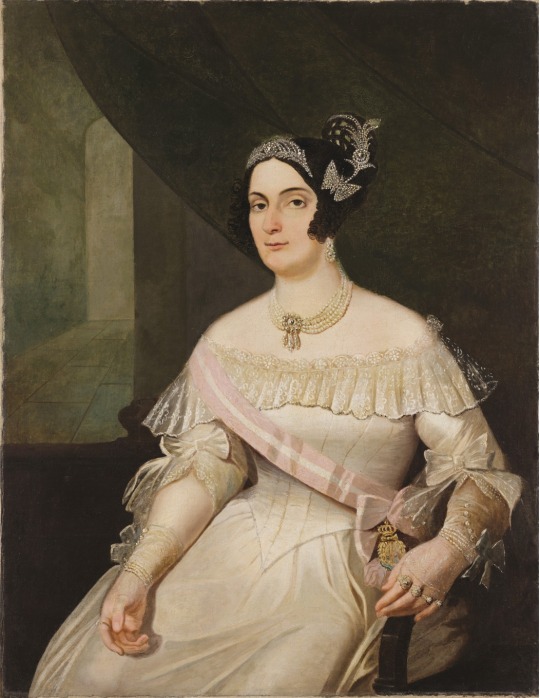
pictured above is a portrait of the Marchioness of Santos, by Francisco Pedro do Amaral from c. 1826
-------------------- ~ -------------------- ~ --------------------
SERIES - On this day November Edition: Domitila died on 3 November 1867.
-------------------- ~ -------------------- ~ --------------------
DOMITILA was born in 1797, at the city of São Paulo in the state colony of Brazil, part of the Portuguese Empire. Her full name was DOMITILA OF CASTRO CANTO AND MELO.
She was one of the daughters of João of Castro Canto and Melo (an Army officer born at the Azores archipelago in Portugal) and Escolástica Bonifácia of Oliveira Ribas Toledo, a Brazilian born.
-------------------- ~ -------------------- ~ --------------------
A brief History... of Brazil...
To give some context... I will alternate Domitila's History with the History of Brazil.
By 1808 the Portuguese Royal Family arrived in the state colony of Brazil, fleing from Napoléon I, Emperor of the French.
-------------------- ~ -------------------- ~ --------------------
Aged 15, in 1813, the young Domitila was married to FELÍCIO, an Army officer whose full name was Felício Pinto Coelho of Mendonça, and they had three children (check the list below). His parents were Felicio Moniz Pinto Coelho and Mariana Manuela Furtado Leite of Mendonça.
It was an abusive marriage and after giving birth to two children she tried to leave him, but she eventually reconciled with him and they had another child.
-------------------- ~ -------------------- ~ --------------------
Meanwhile in 1815, João, Prince Regent of Portugal elevated the state colony of Brazil to Kingdom of Brazil, acting in the name of his mother Maria I, Queen of Portugal.
But months later, already in 1816, the Queen died and the former Prince Regent of Portugal succeeded as João VI, King of Portugal and Brazil.
-------------------- ~ -------------------- ~ --------------------
As the abusive behaviour of Domitila's husband continued, after he made an attempt to her life she had no choice other than separate definitely from him and fight for her children's custody.
-------------------- ~ -------------------- ~ --------------------
From here, DOMITILA's History starts to intertwine with the early History of the Empire of Brazil...
In 1821 the Portuguese Royal Family left Brazil and returned to Portugal, leaving the King's son Dom PEDRO DE ALCÂNTARA FRANCISCO ANTÓNIO JOÃO CARLOS XAVIER DE PAULA MIGUEL RAFAEL JOAQUIM JOSÉ GONZAGA PASCOAL CIPRIANO SERAFIM as the Prince Regent of Brazil. And in 1822 Domitila met him and became his mistress.
Around the time she met the Prince Regent of Brazil, he declared the independence of Brazil from Portugal becoming PEDRO I, the first Emperor of Brazil.
Although the Emperor was married he was known for having many mistresses and Domitila was/is the most famous. They had at least five children (check the list below) together, of whom two girls survived into adulthood. And in 1825 he made her VISCOUNTESS OF SANTOS.
From March to May 1826 her lover was also PEDRO IV, the King of Portugal, until he abdicated. And by October 1826 he elevated her to MARCHIONESS OF SANTOS.
Her lover's wife Archduchess Maria Leopoldine of Austria died in November 1826 after a miscarriage, and the Brazilian people who loved their Empress blamed Domitila and her relationship with the Emperor.
So when her lover decided to remarry many Royal Families around Europe were reticent to give their daughters' hand in marriage to a foreign Monarch who had no respect for his late wife.
Finally by 1829 her lover found a match and was forced to end the relationship with Domitila. She left the Court in Rio de Janeiro and moved back to São Paulo, where she gave birth to their last children, who was raised by her.
After the Emperor of Brazil abdicated in 1831 and moved to Europe, Domitila's eldest daughter with him Isabel Maria de Alcântara Brasileira, Duchess of Goiás went with him to study there. She was the only surviving child of Domitila and the Emperor who was granted a title and as she left Brazil really young she only knew about her origins as an adult.
Soon after moving to São Paulo Domitila found a new lover RAFAEL, the President of the São Paulo Province whose full name was Rafael Tobias of Aguiar. His parents were Antônio Francisco of Aguiar and Gertrudes Eufrosina Aires. She had six children (check the list below) with him before their marriage in 1842, and they stayed together for 24 years until his death in 1857.
The Marchioness of Santos outlived her second husband by ten years, dying aged 69, on 3 November 1867, in her hometown.
-------------------- ~ -------------------- ~ --------------------
DOMITILA and her first husband FELÍCIO had three children...
Francisca Pinto Coelho of Mendonça and Castro - wife of José of Castro of Canto and Melo;
Felício Pinto Coelho of Mendonça and Castro - probably married; and
João Pinto Coelho of Mendonça and Castro - died around three months.
With her second husband RAFAEL she had six children...
Rafael Tobias of Aguiar and Castro - husband of Ana Cândida of Oliva Gomes;
João Tobias of Aguiar and Castro - husband of Ana Barros of Aguiar;
Gertrudes of Aguiar and Castro - died aged three;
Antônio Francisco of Aguiar and Castro - husband of Placidina Adélia of Brito;
Brasílico of Aguiar and Castro - husband of Júlia Augusta of Vasconcelos Tavares; and
Heitor of Aguiar and Castro - died around four years old.
And she also had illegitimate children...
With PEDRO I, Emperor of Brazil...
Isabel Maria of Alcântara, Duchess of Goiás - wife of Ernst, 2nd Count of Treuberg;
Pedro of Alcântara Brasileiro - died aged three months;
Maria Isabel of Alcântara Brasileira, Duchess of Ceará - died aged two months; and
Maria Isabel of Alcântara - wife of Pedro Caldeira Brant, Count of Iguaçu.
#domitila#domitila de castro#royal mistresses#dom pedro i#empire of brazil#brasil imperial#familia imperial brasileira#brazilian nobility#royals#royalty#monarchies#monarchy#royal history#brazilian history#latin american history#world history#history#history lover#braganza#house of braganza#peter i#emperor peter i#marchioness of santos#marquesa de santos#18th century#19th century#history by laura
12 notes
·
View notes
Note
I think the fact that Marguerite lived a long and fruitful life of 62 years compared to her sisters Claude and Elizabeth living only 23 and 27 years proves that the mantra of be a slut, so whatever you want is truly the way to live your life.
shdhahdh I mean, well Elisabeth and Claude were also churning out babies in quick succession which probably doesn’t help in terms of longevity and they both died as a result of childbirth. Elisabeth died a day after giving birth and Claude while giving birth.
So like, although I don’t find Marguerite’s sisters to be half as interesting as her and I don’t think that would have changed if they’d been longer lived, I don’t think it’s particularly fair to judge them for that, you know?
We don’t really know whether Marguerite was infertile (I mean not that it matters in terms of like it doesn’t change her intrisinic value as a human person) because although she and Henri never had kids together, nor do I think we have any reports of her ever even being pregnant, while Henri had kids with various mistresses and later with Maria de’ Medici, I’m of the opinion that she and Henri probably rarely slept together. To look at another example, Henry I of England was married twice. He had two children with his first wife, Matilda of Scotland, including the indomitable Empress Matilda, as well as numerous children with other women out of wedlock. He had no children with his second wife, Adeliza of Louvain. However, after his death, Adeliza remarried and had seven children with her second husband, William d'Aubigny, 1st Earl of Arundel. The reason I think this is a good example is that both parties (Henry and Adeliza) clearly were fertile yet had no children together. It’s a good reminder that we cannot be sure what kind of fertility issues were going on in royal marriages.
We also don’t know how far her love affair with Henri de Guise before her marriage went.
In any case, I point this out because if Marguerite were never pregnant, which it appears she never was, this would have prevented her from dying in childbed like her older sisters, which would have gone a long ways towards extending her potential lifespan.
There is a report, though unsubstantiated, that while Marguerite was imprisoned in the castle of Usson, she believed she was going to die and in the farewell letter she sent to her mother, she asked that a post-mortem be performed to put an end to gossip that she was pregnant by Jean de Lard de Galard d'Aubiac, her supposed lover.
Every time she fell ill, there were rumors she was pregnant.
Of course she was long lived, even disregarding that, outliving all her family members including her ex-husband.
Two antecdotes I like about her sisters:
Elisabeth and Felipe were very loving parents to their two daughters and Elisabeth had a very warm relationship with her stepson, the very troubled Carlos, Prince of Asturias, son of Felipe by his first wife, Maria Manuela of Portugal. (Elisabeth was wife #3 of 4 :/)
Although Carlos was mentally unstable, with increasing reports of his bizarre and cruel, verging on sadistic behavior, Carlos was always kind and gentle with his stepmother. When Felipe eventually locked his eldest son away in 1568, Elisabeth is reported to have cried for days.
Claude was her mother’s favorite daughter and Catherine occasionally visited her daughter in Lorraine. Catherine was present for the baptism of Claude’s firstborn son, Henri. She liked to be surrounded by her grandchildren by Claude. Claude also frequently visited her mother in Paris and was present for many significant royal events.
Not substantiated but while Claude was in Paris for her sister Marguerite’s wedding, she had obviously been informed about the Massacre that was planned and tried to stop Marguerite from leaving their mother’s rooms. To which Catherine told her elder daughter not to tell the younger anything and said that it would be suspicious if Marguerite did not leave and that if it were “god’s will”, she would be safe from harm.
When Claude died in childbirth at age 27, her husband although also still young vowed not to marry again, being unable to find Claude’s equal.
Well the slut stuff...a lot of that is either anti-Valois or Bourbon propaganda. She and Henri de Guise wanted to get married. Her mother and bother Charles IX beat her for what was seen as impudence on her end for trying to promise her hand, which wasn’t hers to give. A royal princess wasn’t worth wasting on an already grasping and powerful noble family when she could provide a foreign alliance. Marguerite’s happiness wasn’t considered an important factor.
After Elisabeth’s death, Catherine offered Marguerite’s hand to Felipe. Marriages were also broached with Felipe’s son, Carlos, Prince of Asturias; Sebastião, King of Portugal; and Archduke Rudolf of Austria before she was betrothed to her cousin, Henri, King of Navarre.
The tale that Marguerite’s brother Charles IX forced her head down as though she were nodding her assent (which we see in the La Reine Margot) is the fabrication of François Eudes de Mézeray (born 1610 and thus would have been 5 when Marguerite died). It was Bourbon propaganda used to justify the annulment of Marguerite and Henri’s marriage 27 years later. Notably, Marguerite does not mention this incident in her Memoirs but doesn’t shy away from discussing her brother Charles’ affairs.
After her marriage, Marguerite definitely took lovers but it is hard to tell what is fact and what is invented about her affairs. Much of her alleged notoriety came from pamphlets that sought to publicly discredit Marguerite and her family.
By the letters that Marguerite sent to her lover, Jacques de Harlay, we have a conception of what Marguerite considered to be love, a union of the minds and bodies, which brought about a fusing of souls.
This makes her distinct from her mother’s Flying Squadron, Catherine’s ladies-in-waiting who she used to seduce courtiers for her own political ends. Charlotte de Sauve, for example, who became Henri de Navarre’s mistress, reputedly did so on Catherine de Medici’s orders.
Marguerite, however, though very pragmatic considering she was also a devout Catholic, never mixed politics and love.
Marguerite went through a looot. I do think she epitomizes the saying the best revenge is living well, but she had to go through a lot to get though to the other side.
No one seems to have appreciated Marguerite’s intelligence and loyalty in her own family. In her teenage years, she was particularly close to her brother Henri. When he was obliged to leave court in 1568 to see to the royal armies, he asked his sister to look out for his interests with the king and their mother. Marguerite was happy to do so, even though doing so won her no favors with her mother or Charles. Was Henri grateful for this? No. He discovered her relationship with Henri de Guise and told on her to their mother and brother.
She assisted her younger brother, François, Duke d’Alencon and her husband, Henri, King of Navarre in their conspiracy, an attempt to link together moderate Catholics and Henri’s Huguenot subjects as an alternative monarch to the heir presumptive Henri (who favored suppressing Protestant worship) when Charles IX’s health appeared to be fading in 1573.
After the conspiracy was uncovered and the conspirators executed or arrested (depending on their rank), Marguerite wrote a letter in support of her imprisoned husband.
After Charles IX’s death, Henri and François were freed by Henri III and permitted to return to court, but Marguerite’s betrayal was neither forgotten nor forgiven by the king.
Further on, Charlotte de Sauve, who had become Henri’s mistress, encited a duel between Henri and François, both of whom were her lovers. This led to a falling out between the two and made things even harder for Marguerite.
Both her husband and brother managed to escape court. But while François refused to negotiate until his sister was set free, Henri did not even do his wife the courtesy of warning her about his departure, leaving her to be confined within the Louvre under suspicion of having helped her husband to escape.
After Marguerite’s death, Maria de’ Medici paid off her debts.
So while I agree that be a slut, do whatever you want is truly the way to live your life, I’m not sure Marguerite would have agreed to that exact wording, you know?
#literally thank you so much for an opportunity to talk about marguerite#marguerite de valois#asks#answers#anonymous
3 notes
·
View notes
Text
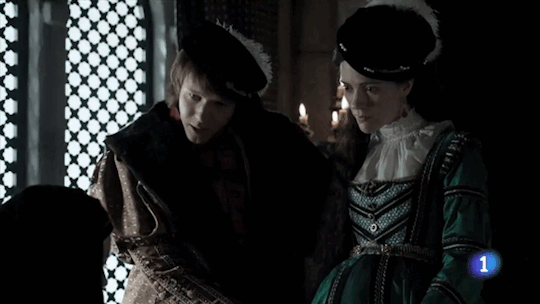



Philip II + touching his wives' pregnant bellies
#philip ii of spain#maria manuela of portugal#mary tudor#elisabeth of valois#anna of austria#i know mary wasn't pregnant#but they thought she was so it still counts#carlos rey emperador#reinas#la princesa de eboli#period drama
54 notes
·
View notes
Note
Hey do you know which players on Everton, Brighton, Bristol, Reading and Tottenham play for their national team??????
Decided to do this for all the FAWSL teams, in case I get some follow up questions about the other teams! I’ve only included full internationals, there are quite a lot who play on their youth national teams incl. England, Scotland, Wales, Denmark, Sweden, Netherlands etc.
Arsenal:
Beth Mead, Leah Williamson, Jordan Nobbs (& Dan Carter - she only has 4 caps in 4 years but may be called in again now she’s recovered from her injury) - England
Kim Little, Lisa Evans, Jennifer Beattie & Emma Mitchell - Scotland
Vivianne Miedema, Danielle van de Donk & Jill Roord - Netherlands
Katie McCabe & Louise Quinn - Republic of Ireland
Leonie Maier & Tabea Kemme - Germany
Viki Schnaderbeck & Manuela Zinsberger - Austria
Katrine Veje & Janni Arnth - Denmark
Lia Wälti - Switzerland
Pauline Peyraud-Magnin - France
Birmingham City:
Lucy Staniforth - England
Chloe Arthur & Abbi Grant - Scotland
Harriet Scott - Republic of Ireland
Rebecca Holloway - Northern Ireland
Brighton & Hove Albion:
Danique Kerkdijk - Netherlands
Ini Umotong - Nigeria
Megan Connolly - Republic of Ireland
Kayleigh Green - Wales
Laure Rafferty - Northern Ireland
Bristol City:
Loren Dykes & Gemma Evans - Wales
Frankie Brown & Abi Harrison - Scotland
Yana Daniëls - Belgium
Chelsea:
Frank Kirby, Millie Bright, Carly Telford (& Hannah Blundell - 3 caps last season and expect her to be called in again) - England
Maren Mjelde, Maria Thorisdottir & Guro Reiten - Norway
Magdalena Eriksson & Jonna Andersson - Sweden
Erin Cuthbert - Scotland
Sophie Ingle - Wales
Ji So-yun - South Korea
Adelina Engman - Finland
Ramona Bachmann - Switzerland
(Ann-Katrin Berger (not yet capped but usually called into camp last season) - Germany
Everton:
Kika van Es & Inessa Kaagman - Netherlands
Simone Magill - Northern Ireland
Elise Hughes - Wales
Lucy Graham - Scotland
(Chloe Kelly & Gabby George both have a cap or 2 for England from last season, and may be called back into camp)
Liverpool:
Christie Murray - Scotland
Rhiannon Roberts - Wales
Niamh Fahey - Republic of Ireland
Manchester City:
Steph Houghton, Keira Walsh, Demi Stokes, Georgia Stanway, Karen Bardsley, Ellie Roebuck, Jill Scott, Ellen White - England
Caroline Weir - Scotland
Pauline Bremer - Germany
Tessa Wullaert - Belgium
Megan Campbell - Republic of Ireland
Matilde Fidalgo - Portugal
Janine Beckie - Canada
Manchester United:
Alex Greenwood, Abbie McManus & Mary Earps - England
Jane Ross, Lizzie Arnot & Kirsty Smith - Scotland
Jackie Groenen - Netherlands
Hayley Ladd - Wales
Reading:
Jade Moore - England
Angharad James, Natasha Harding, Rachel Rowe, Lily Woodham & Charlie Estcourt - Wales
Grace Moloney - Republic of Ireland
Rakel Hönnudóttir - Iceland
Sophie Howard - Scotland
Kristine Bjørdal Leine - Norway
Tottenham Hotspur:
Ria Percival - New Zealand
Siri Worm - Netherlands
Anna Filbey - Wales
West Ham United:
Tessel Middag & Esmee de Graaf - Netherlands
Alisha Lehmann - Switzerland
Cho So-hyun - South Korea
Leanne Kiernan - Republic of Ireland
Adriana Leon - Canada
Think that’s all correct! Some of the players didn’t make their World Cup teams, but were regularly called-up so felt it was fair to include them.
#ask#fawsl#ended up being more than what you asked for anon...#internationals#engwnt#nedwnt#scownt#irlwnt#nirlwnt#walwnt#canwnt#swiwnt#nzlwn#norwnt#islwnt#gerwnt#frawnt#danwnt#swewnt#belwnt#porwnt#korwnt#finwnt#ngawnt#autwnt
132 notes
·
View notes
Text
As mulheres escritoras sempre existiram, embora fossem ignoradas e esquecidas nas grandes obras da história da literatura portuguesa e “escondidas” do público leitor até Abril de 1974. Eis uma lista de mulheres e respectivas obras, escolhidas porque todas elevaram a voz e marcaram uma posição no mundo português da escrita.
Mécia Mouzinho de Albuquerque, Fragmentos Históricos, Versos
Ana de Castro Osório, Em Tempo de Guerra
Laura Chaves, Esboços
Virginia Vitorino, Namorados
Maria Feio, Amor sublime; Corações de mães; Espadas de heróis
Maria Paula de Azevedo, O Colégio da Ameixoeira
Maria O’Neill, Horas de Folga
Teresa Leitão de Barros, Escritoras de Portugal: Génio Feminino Revelado na Literatura Portuguesa.
Marta Mesquita da Câmara, Arco-Íris
Judite Teixeira, Nua. Poemas de Bizâncio
Maria de Cabedo, Fantasias e Realidade
Fernanda de Castro, O Veneno do Sol e Sorte
Helena Augusta Teixeira de Aragão, Caminhos da vida: Contos
Branca de Gonta Colaço, Memórias da Marqueza de Rio Maior
Florbela Espanca, Charneca em Flor
Emília de Sousa Costa, Olha a Malícia das Mulheres!
Oliva Guerra, Serenidade
Amélia Cardia, Pecadora: Romance Psicológico
Manuela de Azevedo, Claridade
Mercedes Blasco, Nas Trincheiras da Vida
Raquel Bastos, Um Fio de Música
Maria Archer, Ida e Volta duma Caixa de Cigarros
Natércia Freire, Meu Caminho de Luz
Irene Lisboa, Começa uma vida
Adelaide Félix, Cada Qual Com o Seu Milagre...
Odette de Saint-Maurice, Noiva dos meus sonhos
Aurora Jardim, Ressaca
Virgínia Lopes de Mendonça, Ar Puro
Marisabel Xavier de Fogaça, Toupeiras Humanas
Patrícia Joyce, Anúncio de Casamento
Maria Lamas, As mulheres do meu país
Isaura Correia Santos, O Senhor Sabe Tudo em Évora
Carmen de Figueiredo, Famintos
Fernanda Botelho, Coordenadas Líricas
Ilse Losa, Rio Sem Ponte
Maria Isabel Lupi, Movimento Antigo: Poemas
Celeste Andrade, Grades Vivas
Maria da Graça Azambuja, Bárbara Casanova
Deolinda da Conceição, Cheong-San – A Cabaia
Natália Nunes, A Mosca Verde E Outros Contos
Graça Pina de Morais, A Origem
Ester de Lemos, Companheiros
Luiza Neto Jorge, A Noite Vertebrada
Judite Navarro, Terra de Nod
Maria da Glória, A Magrizela
Matilde Rosa Araújo, História de um Rapaz
Isabel da Nóbrega, Viver com os Outros
Nita Clímaco, Pigalle
Maria Judite de Carvalho, Os Armários Vazios
Fiama Hasse Pais Brandão, Barcas Novas
Ana Hatherly, Eros Frenético
Natália Correia, O Encoberto
Luísa Ducla Soares, Contrato
Maria Teresa Horta, Minha Senhora de Mim
Maria Isabel Barreno, Maria Teresa Horta e Maria Velho da Costa, Novas Cartas Portuguesas
Maria Gabriela Llansol, Depois de Os Pregos na Erva
Maria do Pilar Figueiredo, Horizontes de Bruma
Agustina Bessa-Luís, As Pessoas Felizes
Isabel Meyrelles, O Livro do Tigre
Vera Lagoa, Revolucionários Que Eu Conheci
Maria Ondina Braga, A Personagem
Isabel de Sá, Esquizo Frenia
Helga Moreira, Fogo Suspenso
Luísa Dacosta, Nos Jardins Do Mar
Hélia Correia, O Número dos Vivos
Eduarda Chiote, Altas Voam Pombas
Maria Velho da Costa, O mapa Cor de Rosa
Fátima Maldonado, Selo Selvagem
Maria Isabel Barreno, O Mundo Sobre o Outro Desbotado
Teresa Rita Lopes, Os Dedos Os Dias As Palavras
Luísa Costa Gomes, O Pequeno Mundo
Yvette K. Centeno, Perto da Terra
Ana Luísa Amaral, Minha Senhora de Quê?
Dóris Graça Dias, As Casas
Cristina Carvalho, Momentos Misericordiosos
Manuela Amaral, Esta Coisa Quase-Vida
Júlia Nery, O plantador de Naus a Haver
Leonor Xavier, Maria Barroso, Um Olhar sobre a Vida
Rosa Lobato de Faria, Os Pássaros de seda
Inês Pedrosa, Nas Tuas Mãos
Manuela Gonzaga, A morte da Avó Cega
Teolinda Gersão, Os Teclados
Inês Lourenço, Um Quarto Com Cidades Ao fundo
Ana Teresa Pereira, A Linguagem dos Pássaros
Dulce Maria Cardoso, Campo de Sangue
Ana Zanatti, Os sinais do medo
Ana Cristina Silva, A Mulher Transparente
Maria de Lourdes Pintasilgo, Palavras Dadas
Alice Vieira, Pezinhos de Coentrada
Isabel Stilwell, Filipa de Lencastre, A rainha que mudou Portugal
Filipa Martins, Elogio do Passeio Público
Isabela Figueiredo, Caderno de Memórias Coloniais
Adília Lopes, Apanhar Ar
Lídia Jorge, A Noite das Mulheres Cantoras
Patrícia Portela, O Banquete
Raquel Freire, Trans Iberic Love
Matilde Campilho, Jóquei
Filipa Leal, Pelos Leitores de Poesia
Alexandra Lucas Coelho, deus-dará
Patrícia Reis, A Construção do Vazio
Joana Bértholo, Ecologia
Cláudia Cruz Santos, A Vida Oculta das Coisas
-in https://www.publico.pt/2019/05/31/p3/cronica/livro-escrito-mulher-publicou-ano-nasceste-portugal-1874647?fbclid=IwAR3bkep76eEwoD4YZTR97IcpDhS8rS5CHPeUfZvTBXAHYRn8IAlMNCZQ7lY
4 notes
·
View notes
Text
15th King of Portugal (6th of the Aviz Dynasty): King João III of Portugal, “The Pious/ The Colonizer”

Reign: 13 December 1521 – 11 June 1557
Acclamation: 19 December 1521
Predecessor: Manuel I
John III (7 June 1502 in Lisbon – 11 June 1557 in Lisbon) nicknamed The Colonizer ("o Colonizador") was the King of Portugal and the Algarves from 13 December 1521 to 11 June 1557. He was the son of King Manuel I and Maria of Aragon, the third daughter of King Fernando II of Aragon and Queen Isabel I of Castile. João succeeded his father in 1521, at the age of nineteen.
During his rule, Portuguese possessions were extended in Asia and in the New World through the Portuguese colonization of Brazil. João III's policy of reinforcing Portugal's bases in India (such as Goa) secured Portugal's monopoly over the spice trade of cloves and nutmeg from the Maluku Islands, as a result of which João III has been called the "Grocer King". On the eve of his death in 1557, the Portuguese empire had a global dimension and spanned almost 1 billion acres (about 4 million square kilometers).
During his reign, the Portuguese became the first Europeans to make contact with both China, under the Ming dynasty, and Japan, during the Muromachi period. He abandoned Muslim territories in North Africa in favor of trade with India and investment in Brazil. In Europe, he improved relations with the Baltic region and the Rhineland, hoping that this would bolster Portuguese trade.

João, the eldest son of King Manuel I to his second wife Maria of Aragon, was born in Lisbon on 7 June 1502. The event was marked by the presentation of Gil Vicente's Visitation Play or the Monologue of the Cowherd (Auto da Visitação ou Monólogo do Vaqueiro) in the queen's chamber.
The young prince was sworn heir to the throne in 1503, the year his youngest sister, Isabel of Portugal, Empress Consort of the Holy Roman Empire between 1527 and 1538, was born.
João was educated by notable scholars of the time, including the astrologer Tomás de Torres, Diogo de Ortiz, Bishop of Viseu, and Luís Teixeira Lobo, one of the first Portuguese Renaissance humanists, rector of the University of Siena (1476) and Professor of Law at Ferrara (1502).
João's chronicler António de Castilho said that, "Dom João III faced problems easily, complementing his lack of culture with a practice formation that he always showed during his reign" (Elogio d'el rei D. João de Portugal, terceiro, do nome). In 1514, he was given his own house, and a few years later began to help his father in administrative duties.

At the age of sixteen, João was chosen to marry his first cousin, the 20-year-old Leonor of Austria,

eldest daughter of Philip the Handsome of Austria-Burgundy

and Queen Joana of Castile,
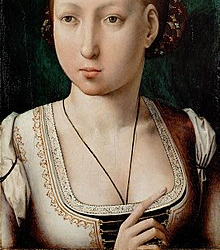
but instead she married his widowed father Manuel. João took deep offence at this: his chroniclers say he became melancholic and was never quite the same. Some historians also argue this was one of the main reasons that João later became fervently religious, giving him name the Pious (o Piedoso).
On 19 December 1521, João was crowned king in the Church of São Domingos in Lisbon, beginning a thirty-six-year reign characterized by extensive activity in internal and overseas politics, especially in relations with other major European states. João III continued the absolutist politics of his predecessors. He called the Portuguese Cortes only three times and at great intervals: 1525 in Torres Novas, 1535 in Évora and 1544 in Almeirim. During the early part of his reign, he also tried to restructure administrative and judicial life in his realm.
The marriage of João's sister Isabel of Portugal to Holy Roman Emperor Charles V,
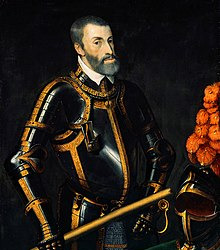
enabled the Portuguese king to forge a stronger alliance with Spain and the Holy Roman Empire. To strengthen his ties with Austria, he married his maternal first cousin Catherine of Austria, younger sister of Charles V and his erstwhile fiancée Leonor, in the town of Crato. João III had nine children from that marriage, but most of them died young. By the time of João's death, only his grandson Sebastião was alive to inherit the crown.
The large and far-flung Portuguese Empire was difficult and expensive to administer and was burdened with huge external debt and trade deficits. Portugal's Indian and Far Eastern interests grew increasingly chaotic under the poor administration of ambitious governors. João III responded with new appointments that proved troubled and short-lived: in some cases, the new governors even had to fight their predecessors to take up their appointments. The resulting failures in administration brought on a gradual decline of the Portuguese trade monopoly. In consideration of the challenging military situation faced by Portuguese forces worldwide, João III declared every male subject between 20 and 65 years old recruitable for military service on 7 August 1549.
Among João III's many colonial governors in Asia were Vasco da Gama,

Pedro Mascarenhas,

Lopo Vaz de Sampaio,

Nuno da Cunha,

Estêvão da Gama,

Martim Afonso de Sousa,

João de Castro

and Henrique de Meneses. Overseas, the Empire was threatened by the Ottoman Empire in both the Indian Ocean and North Africa, causing Portugal to increase spending on defense and fortifications. Meanwhile, in the Atlantic, where Portuguese ships already had to withstand constant attacks of Privateers, an initial settlement of French colonists in Brazil created yet another "front". The French made alliances with native South Americans against the Portuguese and military and political interventions were used. Eventually they were forced out, but not until 1565.
In the first years of João III's reign, explorations in the Far East continued, and the Portuguese reached China and Japan; however, these accomplishments were offset by pressure from a strengthening Ottoman Empire under Suleiman the Magnificent,
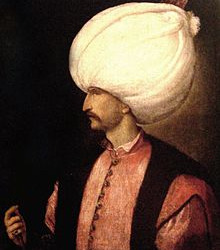
especially in India, where attacks became more frequent. The expense of defending Indian interests was huge. To pay for it, João III abandoned a number of strongholds in North Africa: Safim, Azamor, Alcácer Ceguer and Arzila.
João III achieved an important political victory in securing the control of the Maluku Islands, the "Spice Islands" claimed by Spain since the Magellan-Elcano circumnavigation. After almost a decade of skirmishes in Southeast Asia, he signed the Treaty of Zaragoza with Emperor Charles V on 22 April 1529. It defined the areas of Spanish and Portuguese influence in Asia and established the anti-meridian to the Treaty of Tordesillas.
The reign of João III was marked by active diplomacy. With Spain, he made alliances through marriage that ensured peace in the Iberian Peninsula for a number of years. He himself married Catherine of Austria, the daughter of Philip I of Castile. His sister Isabel of Portugal married Charles V, the king of Spain and Holy Roman Emperor. His daughter Maria Manuela

married King Felipe II of Spain

– and there were others. However, the intermarriage of these closely related royal families may have been one of the factors that contributed to the poor health of João's children and of future King Sebastião of Portugal.
João III remained neutral during the war between France and Spain but stood firm in fighting the attacks of French privateers.
He strengthened relations with the Papal States by introducing the Inquisition in Portugal and the adhesion of the Portuguese clergy to the Counter-Reformation. This relationship with the Catholic Church made it possible for João to name whomever he desired to important religious positions in Portugal: his brothers Henrique and Afonso
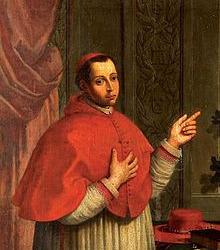
were made Cardinals, and his biological son, Duarte; was made Archbishop of Braga.
Commercial relations were intensified with England, the countries of the Baltic regions and Flanders during João III's reign. Meanwhile, at the other end of the world, Portugal was the first European nation to make contact with Japan. In China, Macau was offered to the Portuguese, and soon Portugal controlled major trade routes in the area. In South Asia, the Portuguese continued its hostile stance against their Muslim rivals and insurgent Indian leaders.
João III's support for the humanist cause was significant. In literature, his active support of Gil Vicente,

Garcia de Resende,

Sá de Miranda,

Bernardim Ribeiro,

Fernão Mendes Pinto,

João de Barros
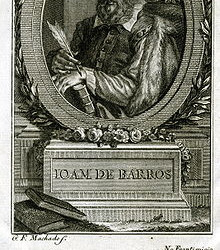
and Luís de Camões
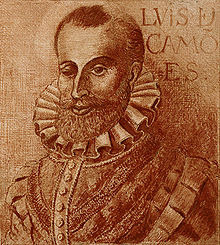
was notable. In the sciences, João III supported the mathematician Pedro Nunes
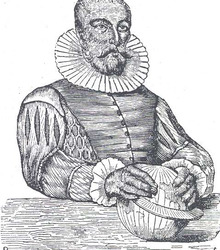
and the physician Garcia de Orta.

Through his links to Portuguese humanists such as Luís Teixeira Lobo, Erasmus dedicated his Chrysostomi Lucubrationes to João III of Portugal in 1527.
The monarch awarded many scholarships to universities abroad, mainly in the University of Paris, where fifty Portuguese students were sent to the Collège Sainte-Barbe headed by Diogo de Gouveia. He definitively transferred the Portuguese university from Lisbon to Coimbra in 1537.

In 1542 João III created in Coimbra a College of Arts (Liberal arts) for which he quickly recalled the many prominent Portuguese and European teachers headed by André de Gouveia at the College of Guienne in Bordeaux. Those included George Buchanan,

Diogo de Teive, Jerónimo Osório, Nicolas de Grouchy, Guillaume Guérante and Élie Vinet, who were decisive for the dissemination of the contemporary research of Pedro Nunes. The king provided the university with excellent resources. However, the importance of the College was shadowed by rivalry between the orthodox views of the "Parisians" group headed by Diogo de Gouveia and the more secular views of the "Bordeaux" school headed by his nephew André de Gouveia, within the advent of the Counter-Reformation and the influence of the Society of Jesus. The Society of Jesus founded colleges and made education more widely available.
Another noteworthy aspect of João III's rule was the support he gave to missionaries in the New World, Asia and Africa. In 1540, after successive appeals to Pope Paul III asking for missionaries for the Portuguese East Indies under the "Padroado" agreement, João III appointed Francis Xavier to take charge as Apostolic Nuncio. He had been enthusiastically endorsed by Diogo de Gouveia, his teacher at the Collège Sainte-Barbe, and advised the king to draw the youngsters of the newly formed Society of Jesus.The Jesuits were particularly important for mediating Portuguese relations with native peoples.
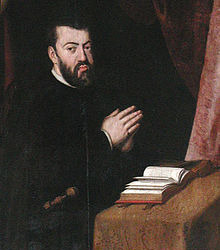
The Inquisition was introduced into Portugal in 1536. As in Spain, the Inquisition was placed under the authority of the king.
The Grand Inquisitor, or General Inquisitor, was named by the Pope after being nominated by the king, and he always came from within the royal family. The Grand Inquisitor would later nominate other inquisitors. In Portugal, the first Grand Inquisitor was Cardinal Henrique the king's brother (who would later himself become king).
There were Courts of the Inquisition in Lisbon, Coimbra and Évora and, from 1560 onwards, in Goa. The Goa Inquisition changed the demographics of Goa considerably. Goa was called the "Lisbon of the Far East" and trade reached a new level.
The Portuguese did not leave Goa undeveloped, rather they introduced modern architecture and built strong roads and bridges that have stood the test of time even till today.
The activities of the Inquisition extended to book censorship, repression and trial for divination, witchcraft and bigamy, as well as the prosecution of sexual crimes, especially sodomy.
Originally created to punish religious deviance, the Inquisition came to have influence in almost every aspect of Portuguese society: politics, culture and social customs. It did serve to spare Portugal the civil upheavals of religious warfare of the sort that occurred in France and elsewhere in Europe during the 16th century.

In João III's time, trade between the Portuguese and Africans was extremely intense in feitorias such Arguim, Mina, Mombasa, Sofala or Mozambique. Under João III, several expeditions started in coastal Africa and advanced to the interior of the continent. These expeditions were formed by groups of navigators, merchants, adventurers and missionaries. Missions in Africa were established by the College of Arts of Coimbra. The objective was to increase the king's dominion, develop peaceful relations and to Christianize the indigenous peoples. Relations with local rulers were often complicated by trade in slaves, as shown by João's correspondence with them.
João III refused to abandon all of the Portuguese North African strongholds, but he had to make choices based on the economic or strategic value of each possession. João III decided to abandon Safim and Azamor in 1541, followed by Arzila and Alcácer Ceguer in 1549. The fortresses of Ceuta, Tangiers and Mazagan were strengthened "to face the new military techniques, imposed by the generalization of heavy artillery, combined with light fire weapons and blades".
João III's court jester was João de Sá Panasco, a black African, who was eventually admitted to the prestigious Order of Saint James based on his service in the Conquest of Tunis (1535).
Before the reign of João III, the Portuguese had already reached Siam (1511), the Maluku Islands (1512), the Chinese littoral (1513), Canton (1517) and Timor (1515). During João's rule, the Portuguese reached Japan, and at the end of João's reign, Macau was offered to Portugal by China. From India, João III imported an amazing variety of spices, herbs, minerals, and fabrics; from Malacca, exotic woods and spice; from Bengala, fabrics and exotic foodstuffs; from Alexandria and Cairo, exotic woods, metals, minerals, fabrics, and boullion; and from China, musk, rhubarb, & silk in exchange for gromwells, pearls, horses from Arabia and Persia, non-worked silk, silk embroidery threads, fruits of the date palm, raisins, salt, sulphur and many other goods.
As Muslims and other peoples constantly attacked Portuguese fleets in India, and because India was so far from mainland Portugal, it was extremely difficult for João III to secure Portuguese dominion in this area. A viceroy (or Governor-General with extensive powers) was nominated, but this was not enough to defend the Portuguese possessions in India. The Portuguese started by creating feitorias – commercial strongholds in Cochin, Cannanore, Coulão, Cranganore and Tanor – with the initial objective of establishing just a commercial dominion in the region.
The hostility of many Indian kingdoms and alliances between sultans and zamorins to expel the Portuguese made it necessary for the Europeans to establish a sovereign state. Portugal thus militarily occupied some key cities on the Indian coast, and Goa became the headquarters of the Portuguese Empire in the East as of 1512. Goa became a starting point for the introduction of European cultural and religious values in India, and churches, schools and hospitals were built. Goa remained an overseas possession of Portugal until India reclaimed it in 1961.
The Portuguese arrived in Japan in 1543. Japan had been known in Portugal since the time of Marco Polo,

who called it "Cipango". Whether Portuguese nationals were the first Europeans to arrive in Japan is debatable. Some say the first Portuguese arrival was the writer Fernão Mendes Pinto, and others say it was the navigators António Peixoto, António da Mota and Francisco Zeimoto.
Portuguese traders started negotiating with Japan earlier than 1550 and established a base there at Nagasaki. By then, trade with Japan was a Portuguese monopoly under the rule of a Captain. Because the Portuguese established themselves in Macau, Chinese commercial relations, mainly the silver trade with Japan, were improved under João III's rule.
After the voyage of Fernão de Magalhães

the Crown of Castile claimed the recently discovered Maluku Islands. In 1524, a conference of experts (cartographers, cosmographers, pilots, etc.) was held to solve the dispute caused by the difficulty of determining the meridian agreed to in the Treaty of Tordesillas. The Portuguese delegation sent by João III included names such as António de Azevedo Coutinho, Diogo Lopes de Sequeira, Lopo Homem and Simão Fernandes. The dispute was settled in 1529 by the Treaty of Zaragoza, signed by João III and Carlos I of Spain. The Portuguese paid 350,000 gold ducados to Spain and secured their presence in the islands, which not have been a necessity, as Portugal was actually entitled to the islands according to the Treaty of Tordesillas.
In 1553, Leonel de Sousa obtained authorization for the Portuguese to establish themselves in Canton and Macau. Macau was later offered to João III as a reward for Portuguese assistance against maritime piracy in the period between 1557 and 1564. Malacca, which controlled the eponymous Strait of Malacca, was vital to Portuguese interests in the Far East. After an unsuccessful expedition in 1509, Malacca was finally conquered by Afonso de Albuquerque, the Portuguese viceroy of India, on 24 August 1511. Malacca was later taken by the Dutch in 1641.
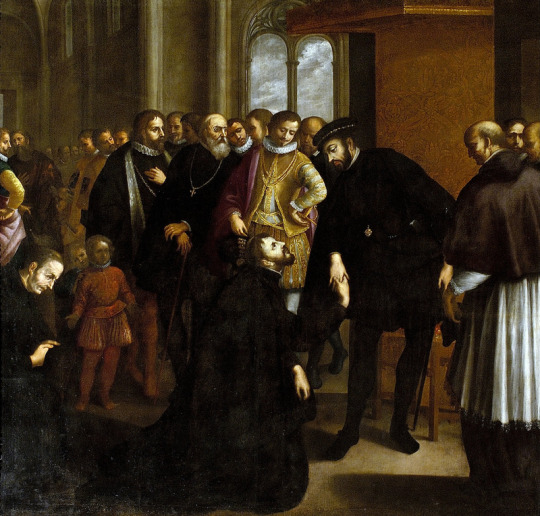
In order to follow its trade routes to the Far East, Portugal depended on the seasonal monsoon winds in the Indian Ocean. In winter, the prevailing northeasterly monsoon impeded travel to India; in summer, the southwest monsoon made departure from India difficult. As a result, Portugal determined that it needed permanent bases in India, in addition to its ports of call in Africa, to pass the time while the wind changed. In addition to Goa, they established themselves in Ceylon (in what is now Sri Lanka) through the conquest of several Ceylonese kingdoms in the sixteenth century. Portuguese Ceylon remained in Portuguese hands until 1658, when it was seized by the Dutch after an epic siege.
During the reign of King João III, the Portuguese Empire established itself in South America with the foundation of the twelve Captaincy Colonies of Brazil (from 1534 onwards). Each with its own donatary captain, the twelve colonies struggled independently. In 1549, João III established the Governorate General of Brazil, and the twelve captaincy colonies became subordinate to it. The first Governor-General appointed by João III, Tomé de Sousa, founded the city of Salvador, Bahia (São Salvador da Bahia de Todos os Santos) in 1549.
Immediately following the discovery of Brazil in 1500, the Portuguese imported brazilwood, Indian slaves and exotic birds from there. Brazilwood was a much appreciated product in Europe, because it could be used to produce a red dye. During João III's rule, after the initial colonization, Portuguese explorers intensified the search for brazilwood and began the cultivation of sugarcane, which was well suited to the climate of Brazil, especially around Recife and Bahía.
In the final years of João's reign, Portugal's colony of Brazil was just beginning its rapid development as a producer of sugar that compensated for the gradual decline of revenues from Asia, a development that would continue during the reign of his grandson and successor, Sebastião (1557–1578). Since Brazil lacked a large native population, and the Indians did not make good plantation workers, the Portuguese colonists began to import African slaves to work their plantations. The first slaves, from the region of Guinea, arrived in Brazil in 1539. Most of them worked in the sugarcane fields or served as house servants.
From 1539, the heir to the throne was João Manuel, Prince of Portugal,

who married Joana of Austria, Princess of Portugal,

daughter of Charles V. The sole son of João III to survive childhood, Prince João, was sickly and died young (of juvenile diabetes), eighteen days before his wife gave birth to Prince Sebastião on 20 January 1554. When João III died of apoplexy in 1557, his only heir was his three-year-old grandson, Sebastião. João III's body rests in the Monastery of Jerónimos in Lisbon, next to his wife.
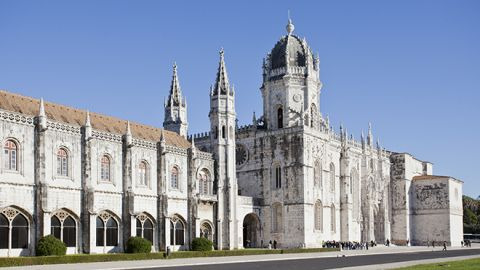

With his wife Catarina of Austria (married 10 February 1525) he had 9 nine children:
Prince Afonso (24 February 1526 - March 1526) Prince of Portugal (1526).
Princess Maria Manuela (15 October 1527 - 12 August 1545) Princess of Portugal (1527–1531). Princess consort of Asturias by marriage to King Philip II of Spain, then Prince of Asturias. She had one deformed child, Prince Carlos, and she died a few days after his birth.
Infanta Isabel (28 April 1529 - 28 April 1529)
Infanta Beatriz (15 February 1530 - 15 February 1530)
Prince Manuel (1 November 1531 - 14 April 1537) Prince of Portugal (1531–1537). Declared heir in 1535.
Prince Filipe (25 March 1533 - 29 April 1539) Prince of Portugal (1537–1539). Declared heir in 1537.
Infante Dinis (6 April 1535 - 1 January 1537)
Prince João Manuel (3 June 1537 - 2 January 1554) Prince of Portugal (1537–1554). Declared heir in 1539. Married Joana of Spain. Their son became King Sebastião I.
Infante António (9 March 1539 - 20 January 1540)
8 notes
·
View notes